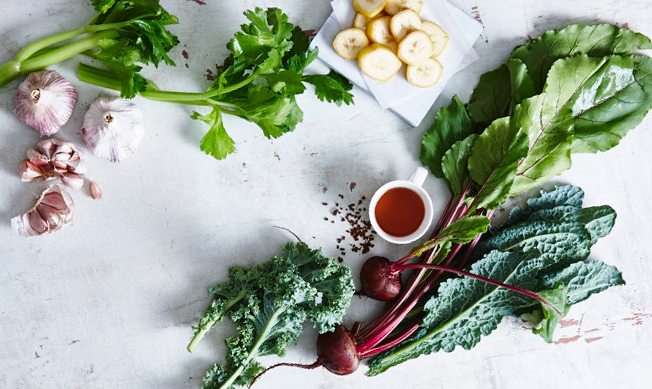Your blood pressure rises with each heartbeat and falls when your heart relaxes between beats. Your blood pressure reflects circulating blood volume, efficiency of the heart as a pump, viscosity of the blood and elasticity of arterial walls. A persistent change to any of these factors will result in changes to blood pressure.
While blood pressure can alter from minute to minute with changes in posture, exercise, stress or sleep, practitioners recommend that it should generally stay between 90/60 and 120/80 – the systolic number reported on top refers to the amount of pressure in the arteries when the heart is contracting; the bottom, or diastolic number, refers to the amount of pressure in the arteries when the heart muscle is relaxed between beats.
High blood pressure, known as hypertension, is a common disorder of the circulatory system, affecting around one in seven adult Australians. Abnormally high blood pressure – when blood pumps with unusual force through the arteries – is diagnosed when the systolic pressure exceeds 160 or diastolic exceeds 90.
A major risk factor for heart attack, stroke and arteriosclerosis, hypertension is more common with obesity and age – as we grow older, our arteries become more rigid, changing blood pressure patterns. While there can be symptoms associated with hypertension – including headaches, fullness in the head, ringing in the ears (tinnitus), fatigue and irritability – it often produces no symptoms, which means that many people don’t realise they have it.
It is not uncommon to experience an increase in blood pressure purely by having blood pressure taken. For this reason, many health practitioners will assess blood pressure twice in the same consultation. Avoiding caffeine, exercise, and remaining calm during this process, will ensure the most accurate reading.
Around 80 per cent of people with hypertension are in the borderline to moderate range, so most cases can be brought under control by making diet and lifestyle changes.
The Dietary Approaches to Stop Hypertension, or DASH, diet was created by the America National Heart, Lung and Blood Institute, based on studies that looked at the efficacy of a system of dietary recommendations for hypertension. The diet is rich in fruits and vegetables; low in dairy, saturated and total fat; high in fibre, potassium, calcium and magnesium; and moderately high in protein.
Researchers from the Queen Mary University of London and the London School of Medicine and Dentistry found that consuming beetroot juice had a significant impact on blood pressure. The study, published in the medical journal Hypertension, found that nitrates in beetroot were the reason for its efficacy. Consuming nitrate produces another chemical in the body called nitrite, which, in turn, becomes nitric oxide that opens up blood vessels, allowing blood to flow more easily. This means the pressure and the resistance to flow decreases. Other nutrients to look out for include:
Magnesium
Magnesium can help lower blood pressure as it acts as a vasodilator. This means it opens up the vessels, allowing for greater blood flow, therefore reducing pressure. It also acts as a calcium channel regulator, reducing the accumulation of calcium that can contribute to constricted vessels, which inhibit blood flow. Magnesium is found in high amounts in leafy green vegetables, nuts and fish.
Potassium
A diet low in potassium and high in sodium is linked to high blood pressure. Sodium restriction alone is insufficient without high potassium intake, so it is important to consider your consumption of both these elements in your diet to help reduce any risk of hypertension.
Cocoa Flavanols
Cocoa flavanols are plant-derived bioactives from the cacao bean, which can contribute to cardiovascular health. They can be destroyed in regular food production so ensure you consume chocolates with the lowest amount of sugar and highest amount of cocoa.
Omega-3 oils
Fish oils depress the vascular response to agents that promote constriction. They also lower serum lipids (blood fats), offering systemic cardiovascular support. Omega-3 oils play a vital role in reducing the risk of hypertension. They can be found in nuts and seeds as well as fish such as anchovies and sardines.
Beetroot
Drinking a glass of beetroot juice daily can reduce blood pressure as effectively as medication. This is due to the nitrates that beetroot contain. Dietary nitrate is water soluble so steam, roast or juice them.
Celery
Celery has a high water content and provides nutrients for reducing blood pressure including magnesium, potassium and calcium. It also contains pthalides, a phytochemical which relaxes artery walls.
Banana
Bananas are very high in potassium, making them nature’s energy bar. Increasing potassium levels while reducing sodium levels has a significant impact on sodium-derived hypertension.
Garlic
Garlic, along with onion, shows great promise in reducing blood pressure while keeping blood thin. Nearly four cloves a day are needed: add it to all home cooked meals or consider a supplement.
Dark Leafy Greens
Eat lots of greens, especially leafy ones. These are high in magnesium, which dilates blood vessels to lower blood pressure. Magnesium also strengthens the nervous system to help control stress.
Dandelion Leaf Tea
Most diuretics cause potassium loss, yet dandelion leaf is strongly diuretic with a net potassium gain. This allows excess fluid to be removed while keeping the sodium/potassium ratio in balance.







